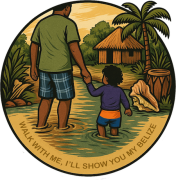Fascinating Facts About Belize You Should Know
Whether you’re planning your first trip to Belize or just curious about this beautiful country, here are some fascinating facts about Belize that reveal its unique geography, rich culture, ancient heritage, and stunning natural beauty. As a Belize-based local guide, I’ve woven in some insights to help you understand why Belize is truly the “Jewel of the Caribbean.”
Belize Located
Belize is a small country on the northeast coast of Central America, bordered by Mexico to the north, Guatemala to the west and south, and the Caribbean Sea to the east. Its capital city is Belmopan, but most visitors land in Belize City, the largest city and main port. (See Belize on the map for perspective.)
The Languages that Are Spoken in Belize
English is Belize’s official language, making it unique in Central America. However, Belizeans are often multilingual — speaking Belizean Creole (Kriol), Spanish, several Mayan languages, and Garifuna, an Afro-Caribbean language.
When visitors come to Belize—or as we say in Creole, “wen uh coh dah Belize”—I enjoy teaching them some Creole phrases. It’s a fun way to connect with locals and experience Belize in a deeper, more meaningful way.
Size of Belize
Belize covers about 22,970 square kilometers (8,867 square miles) and has a population of roughly 400,000 people, making it one of the least densely populated countries in Central America.
The Belize Barrier Reef
The Belize Barrier Reef stretches over 300 kilometers along the Caribbean coast and is home to more than 500 species of fish and numerous endangered marine animals like the West Indian manatee and the loggerhead sea turtle. Its vibrant coral formations provide essential habitats, support local fisheries, and attract thousands of tourists annually for world-class snorkeling and diving adventures. In 1996, UNESCO designated it a World Heritage Site due to its ecological importance and outstanding natural beauty.
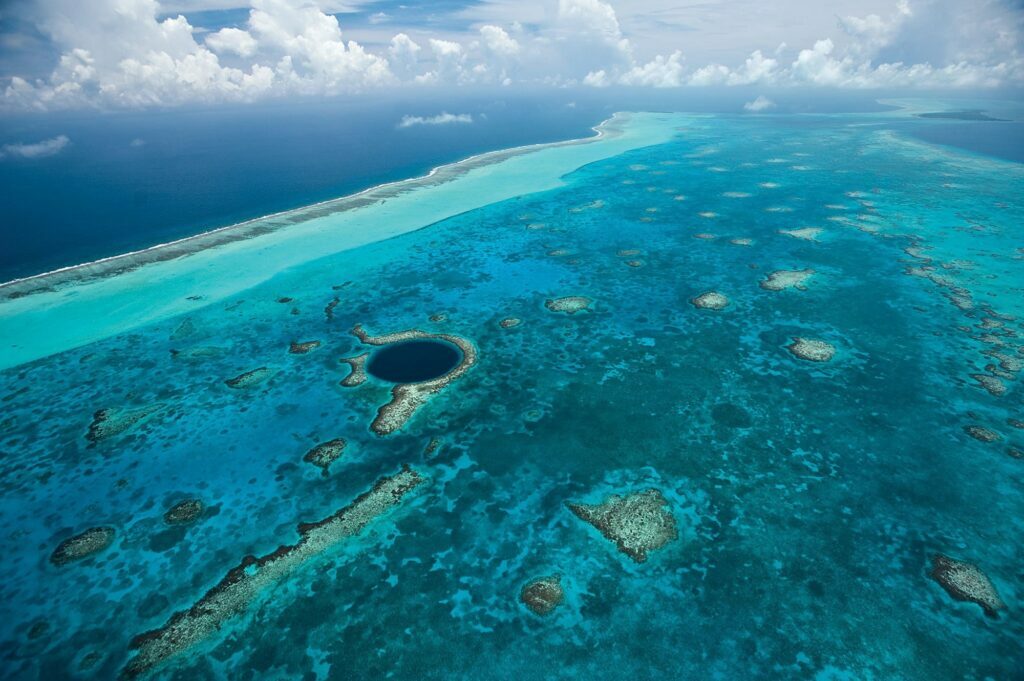
Home of the Great Blue Hole
Near the center of the Belize Barrier Reef lies the world-famous Great Blue Hole, a giant underwater sinkhole over 300 meters wide and more than 120 meters deep. It’s a must-see for divers worldwide and was declared one of the top dive sites by Jacques Cousteau.
Diverse Is Belize’s Wildlife
Belize boasts lush rainforests, mangroves, and marine reserves that shelter species like jaguars, tapirs, toucans, manatees, sea turtles, and howler monkeys. Approximately 37% of Belize’s land is protected in national parks and reserves.
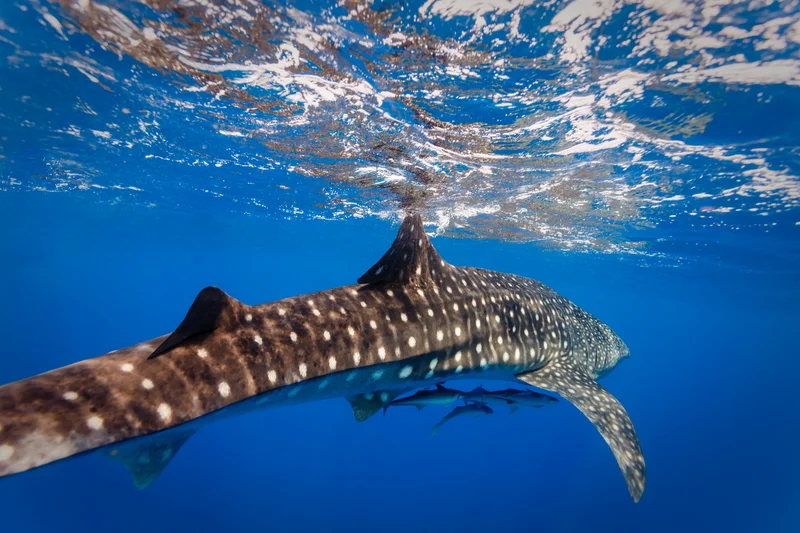
The National Animal
The Baird’s tapir, also called the “mountain cow,” is Belize’s national animal. This large, gentle herbivore roams the dense forests and is a symbol of the country’s rich biodiversity.
Belize’s Ancient Maya Heritage
Belize was once part of the Maya civilization, which thrived here for thousands of years. It is home to thousands of Maya archaeological sites, including famous ruins like Caracol, Xunantunich, and Lamanai.
When I climbed to the top of Caana, the great pyramid at Caracol, I stood just above the jungle canopy, amazed by the endless sea of green treetops stretching as far as the eye could see. That breathtaking view connects you not just to the ancient Maya builders but to the vibrant rainforest that still thrives around the ruins today.
Caracol's Sky Palace
Caracol is Belize’s largest Maya site, larger even than Tikal in Guatemala. It features the massive “Caana” pyramid (“Sky Palace”), which visitors can climb for panoramic jungle views.
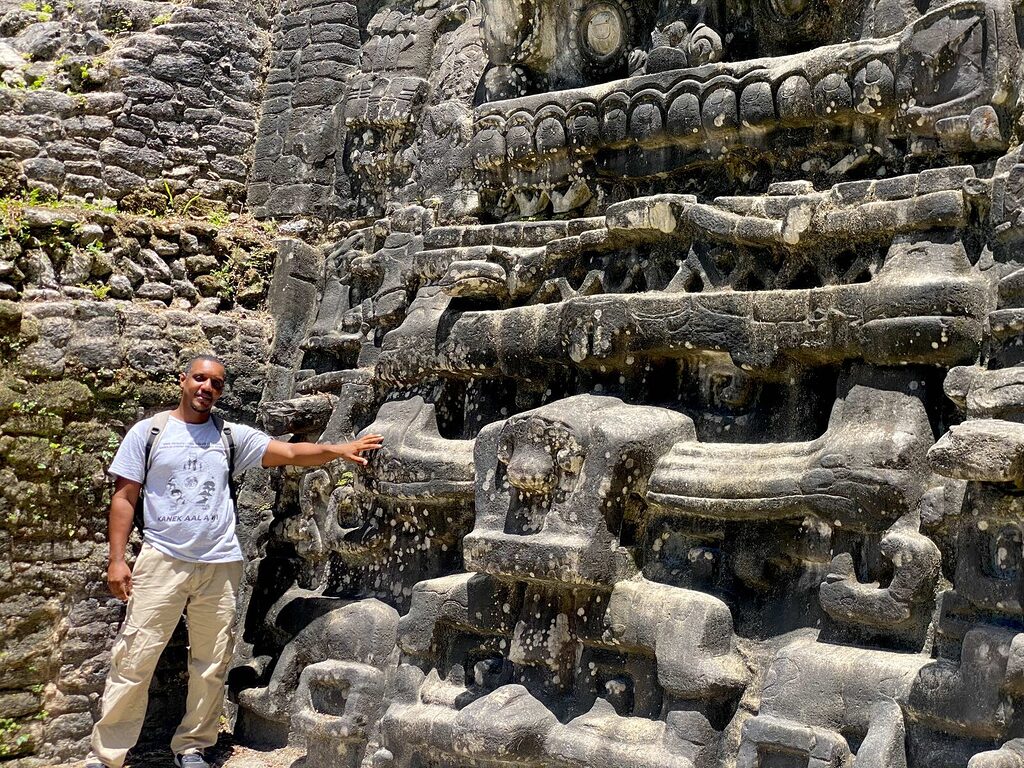
The History of Belize’s Independence
Belize was known as British Honduras, a British colony until it gained independence on September 21, 1981. It remains a member of the Commonwealth, recognizing King Charles III as head of state.
Belize’s Climate
Belize enjoys a tropical climate with a dry season from late February to May and a rainy season from June to November. The country also lies within the Atlantic hurricane belt, with the highest risk of storms in summer and fall.
- Average Temperatures: 70–90°F (21–32°C) year-round
- Sea Temperatures: 79°F (26°C) in winter to 86°F (30°C) in summer
- Hottest Months: May–June, when daytime highs often push above 90°F (32°C).
Fact: Belize hosts remarkable seasonal migrations—from whale sharks feeding at Gladden Spit to mass bird movements at Crooked Tree. Explore the migration calendar to see how wildlife follows Belize’s climate rhythms..
Belize’s National Symbols
- Flag: Features a coat of arms with two woodcutters representing Belize’s logging history.
- National Bird: The colorful keel-billed toucan, known for its large vibrant bill.
- National Flower: The striking Black Orchid.
Belizean Culture Unique?
Belize’s culture is a vibrant blend of Maya, Creole, Mestizo, Garifuna, and other influences, reflected in its languages, music (like punta and brukdown), festivals, and cuisine.
One thing I love about Belize is its rich cultural mix. On any given day, my breakfast might be a Mestizo dish, lunch a Creole favorite, and dinner a traditional Maya fish recipe. This delicious blend reflects how our people have lived side by side, sharing traditions and flavors for generations.
The Garifuna
The Garifuna people are Afro-Indigenous descendants living mainly along Belize’s coast. Their music, language, and traditions are recognized by UNESCO as Intangible Cultural Heritage.
How Forested Is Belize?
About 60% of Belize is covered by forest, including tropical rainforests, pine savannas, and mangroves. This extensive forest cover earns Belize the nickname “Jewel of the Caribbean.”
The Kind of Adventures Can You Have in Belize
Some Important Belize Festivals
The September Celebrations include two national holidays: Battle of St. George’s Caye Day (September 10) and Independence Day (September 21), featuring parades, music, and cultural events.
The Role Does Mahogany Play in Belize’s History
Logging mahogany was central to Belize’s early economy and shaped its colonial history. The flag’s woodcutters symbolize this legacy.
Coastlines Caribbean Sea only (no Pacific access)
Belize is the only Central American country without Pacific Ocean access — its entire coastline faces the Caribbean Sea.
Unlike Costa Rica or Nicaragua, which face both the Pacific and the Caribbean, Belize looks only east. That’s why our tourism is reef and cayes, not Pacific surf.
The Economy of Belize
A Unique Caribbean Nation
Belize’s National Motto
“Sub Umbra Floreo” means “Under the shade I flourish,” referring to Belize’s forests and history.
Belize’s Protected Areas
Belize has numerous national parks and wildlife sanctuaries, including the world’s first jaguar preserve, the Cockscomb Basin Wildlife Sanctuary.
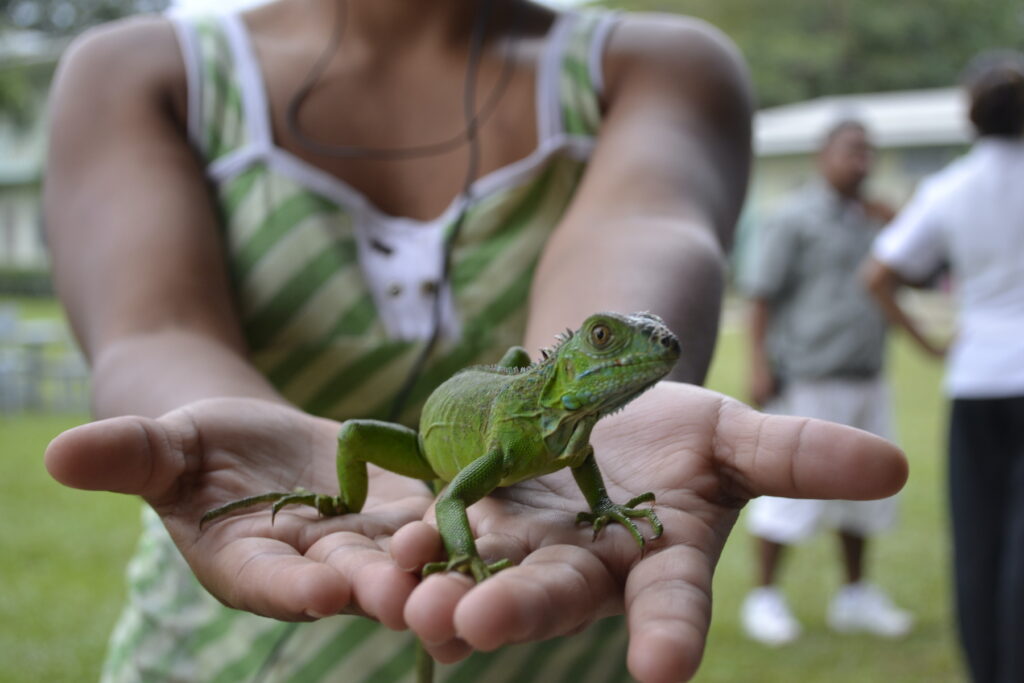
The Population Makeup of Belize
Belize’s population is ethnically diverse: Mestizo, Creole, Maya, Garifuna, East Indian, Mennonite, and others. This diversity enriches the culture.
You Experience Belize’s Maya Culture
You can visit ancient ruins, attend cultural festivals, learn about rituals and ceremonies, and explore villages where Maya languages and traditions thrive.
🪨 Bonus Belize Facts:
One quick fact that always surprises travelers is that Belize’s country code is +501. It shows up in everything from phone numbers to WhatsApp contacts and even official government projects. I break down all the essential codes — phone, postal, airport, and more — in this Belize Codes guide.
Nearly 65% of Belize is built on limestone.
According to the Geological Survey of Belize, almost two-thirds of the country’s landmass is underlain by ancient limestone — formed millions of years ago when this region was submerged beneath a tropical sea.
That limestone now shapes:
- 🕳️ Belize’s vast cave systems
- 💧 Underground rivers and springs
- 🏛️ Ancient Maya temples and quarries
- 🏝️ Sand on the beaches and cayes
It’s not just rock.
It’s the foundation of Belizean nature, culture, and history.
👉 Read the full story beneath Belize
🌎 Belize Fun Fact: Did you know the legendary Pan-American Highway — stretching from Alaska all the way to the tip of South America — skips only two countries on the mainland? One of them is Belize. That makes us a true crossroads you can’t just drive past — you have to choose to enter.
The announcement on October 1, 2025, was more than policy — it was identity in motion. Belize, together with Barbados, Dominica, and St. Vincent & the Grenadines, embraced full free movement, allowing citizens to live and work without restrictions. This development grew out of the 2022 protocol on Enhanced Cooperation, proving that CARICOM integration can deepen even when not all members move at the same pace. For Belize, it confirmed what we have long felt: our place is not only in Central America, but firmly in the Caribbean family.
Frequently Asked Questions About Belize
English is the official language, but many Belizeans also speak Creole, Spanish, and indigenous languages.
Belize is in northeastern Central America, bordered by Mexico, Guatemala, and the Caribbean Sea.
It’s the second-largest coral reef system in the world and a UNESCO World Heritage Site.
The dry season from late February to May is ideal for most outdoor activities.
Maya ruins, the Barrier Reef, rainforests, wildlife sanctuaries, and the Great Blue Hole.
Ready to Explore Belize?
Whether you’re fascinated by ancient history, eager for adventure, or simply want to soak up the natural beauty, Belize offers an unforgettable experience.
If these facts gave you a new picture of Belize, that’s just the beginning. My site is built to help you see not just the country, but the meaning behind it. Take your time, explore — and let Belize surprise you.
References
- Belize Government Portal — https://www.belize.gov.bz/
- Britannica — Belize Language and People — https://www.britannica.com/place/Belize
- UNESCO — Belize Barrier Reef Reserve System — https://whc.unesco.org/en/list/764
- NOAA Great Blue Hole Facts — https://oceanservice.noaa.gov/
- Belize Tourism Board — https://www.travelbelize.org/
- Belize Forest Department
- CARICOM — https://caricom.org/
- Belize Tourism Statistics — https://www.travelbelize.org/
